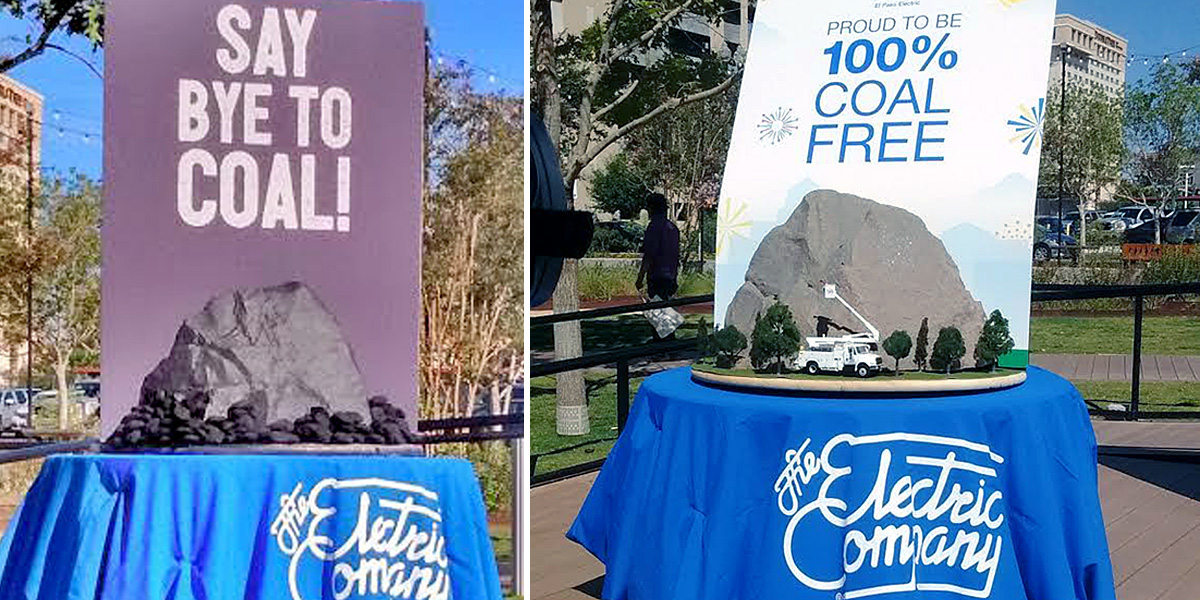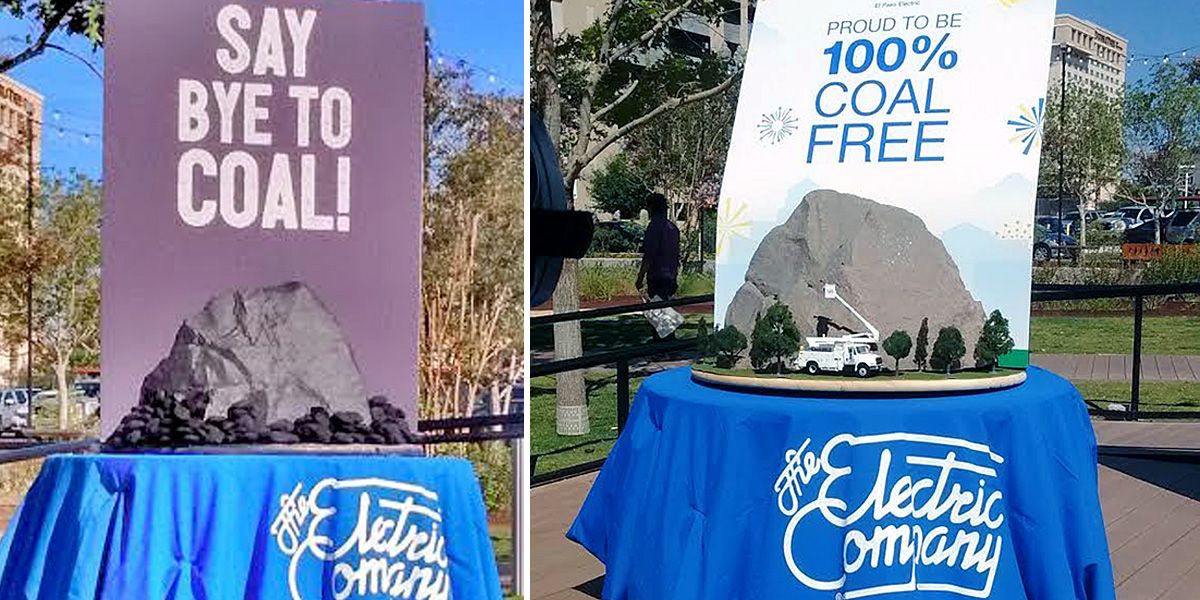

El Paso Electric celebrated the milestone of becoming Texas and New Mexico’s first coal-free utility at an event held in downtown El Paso Wednesday. The Sierra Club joined speakers from across the city to mark this achievement.
Over the last several years, El Paso Electric has been working on ways to provide power in its Texas and New Mexico territories without the coal-fired electricity it has obtained for decades from the Four Corners coal-fired power plant located within the Navajo Nation. The Four Corners coal plant has been one of the largest sources of carbon pollution in the country for many years, as well as a large source of nitrogen oxides and sulfur pollution that impact public health in indigenous communities. El Paso Electric owned a seven percent share of the plant until its coal-free announcement last week.
While other utilities in the region decide how much longer they intend to operate the 50-year-old Four Corners coal plant, El Paso Electric made the wise decision to get out of the coal business and instead focus its resources on cleaner energy like solar power.
“I congratulate El Paso Electric on ending its ownership and affiliation with the Four Corners coal power plant in New Mexico,” Dr. Al Armendariz, deputy regional director of the Sierra Club’s Beyond Coal Campaign, said.
“While there is still more work to be done to fully realize Texas and New Mexico’s renewable energy potential, we know that shifting away from carbon-polluting coal plants is one of the most important things we can do to avoid the worst impacts of climate change, which is already making droughts more serious and drying up the Rio Grande.
“As a native of El Paso, I am proud the local utility is providing my family with cleaner power including a growing amount of zero pollution solar energy. I am also pleased that El Paso Electric has embraced fair treatment of people who aim to produce power through rooftop solar,” Armendariz added.
Statewide, Texas draws nearly 19 percent of its power from coal and New Mexico draws 37 percent of its power from coal. With some utilities like MidAmerican Energy in Iowa on the path to getting nearly 85 percent of its power from renewable energy by 2020, El Paso Electric is one of the first utilities in the south central U.S. to start catching up to its peers in the utility industry. Since 2010, 238 coal-fired power plants nationwide have been announced to retire, comprising a whopping 45 percent of all the coal plants operating just six years ago.
“We commend El Paso Electric on a decision that embodies a tectonic shift across the country away from carbon-polluting coal to clean energy,” said Antha N. Williams, head of environmental programs at Bloomberg Philanthropies, which has provided $80 million to the Sierra Club’s Beyond Coal Campaign.
“Businesses recognize that renewable energy not only protects the health of American citizens and mitigates the impacts of climate change, but it also makes sense economically—saving consumers on their bills in the long run and creating jobs in emerging industries. This transition is happening as a result of smart advocacy and leaders who understand the future of our energy economy will be driven by clean power, not coal.”
According to El Paso Electric, the utility will be eliminating one billion pounds of carbon dioxide from its annual emissions by no longer being dependent on the Four Corners plant, while also preventing another billion pounds of carbon dioxide via the operations of its large-scale solar facilities.

 233k
233k  41k
41k  Subscribe
Subscribe 
